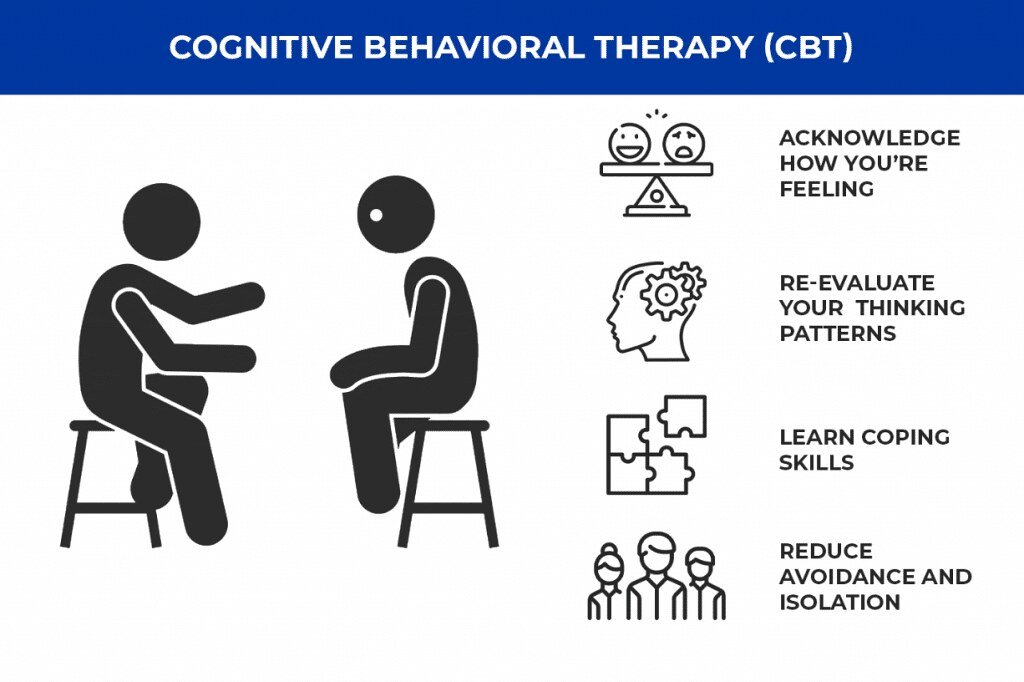Every sound a dog makes has a certain meaning – the piercing bark of excitement, the low growl of warning, the playful yips echoing through the house. But what about that incessant whining that seems to infiltrate your eardrums and pierce your patience? Understanding the causes behind your canine companion’s whining is the key to unlocking the door to a quieter, more harmonious household. In this article, we delve into the multitude of reasons why dogs whine, lifting the veil on their mysterious melodies and providing you with the knowledge and tools to put a stop to this melodious mystery once and for all.
Table of Contents
- Understanding the Behavioral Patterns of Whining in Dogs
- Uncovering the Underlying Triggers of Dog Whining
- Psychological and Emotional Factors That Contribute to Whining
- Effective Strategies to Manage and Prevent Canine Whining
- Addressing Health-related Issues to Alleviate Dog Whining
- Q&A
- In Retrospect

Understanding the Behavioral Patterns of Whining in Dogs
Dogs are complex creatures with unique ways of communicating their needs and emotions. One such behavior that has baffled pet owners for ages is whining. Whining is a vocalization that dogs use to express a wide range of emotions, from simple attention-seeking to pain or discomfort. By understanding the behavioral patterns associated with whining, we can better interpret our furry friend’s messages.
1. Attention-seeking: Whining is often used as a tactic to grab our attention. Whether your dog wants to go outside, play, or simply wants some affection, they may resort to whining to get your focus. Remember not to reinforce this behavior by giving in immediately every time your dog whines for attention. Instead, establish a reliable routine that fulfills their needs and gives them appropriate outlets for communication.
2. Anxiety or fear: Dogs with separation anxiety or fear issues may whine excessively when left alone or confronted with a stressful situation. This behavior is their way of seeking comfort or reassurance. If your dog exhibits anxiety-related whining, it’s essential to address the root cause by gradually desensitizing them to the triggers or seeking professional help.
3. Physical discomfort: Whining can also be indicative of pain or discomfort in dogs. When your furry companion is experiencing physical ailments, such as injuries or illnesses, they may vocalize their distress through whining. It’s crucial to pay attention to other accompanying signs, such as limping, lack of appetite, or lethargy, and consult a veterinarian if necessary.
Understanding the different behavioral patterns associated with whining in dogs allows us to respond appropriately to our furry friend’s needs. It is vital to provide them with positive reinforcement and address any underlying issues to strengthen the bond and ensure their well-being. Remember, patience and observation are key when decoding the language of our beloved canines.
Uncovering the Underlying Triggers of Dog Whining
When it comes to dog behavior, whining can often be a perplexing issue for dog owners. Understanding the underlying triggers of this behavior can help decipher what your furry friend is trying to communicate. Here are a few key factors that may contribute to your dog’s whining:
- Physical discomfort: Just like humans, dogs can experience physical discomfort that leads to whining. It could be as simple as hunger, thirst, or needing to use the bathroom. On the other hand, it might signify a more serious health issue that requires veterinary attention. Observing your dog’s behavior and consulting with a vet can help narrow down the cause.
- Attention-seeking: Dogs are social animals, and sometimes whining is their way of seeking attention. They may feel lonely, bored, or simply desire some extra love and interaction. In such cases, providing mental stimulation through toys and games, or engaging in regular exercise and quality bonding time can help alleviate their restlessness.
- Anxiety and fear: Whining can also be a sign of anxiety or fear in dogs. They may whine when startled by loud noises, when left alone for extended periods, or when faced with stressful situations such as trips to the veterinarian. Gradually desensitizing and counter-conditioning them to these triggers can help reduce their anxiety and subsequent whining.
Remember, every dog is unique, and the triggers for their whining can vary. Patience, observation, and proper training techniques are key to identifying and addressing the specific reasons behind your pet’s whining behavior, ensuring a harmonious and happy bond between you and your beloved furry companion.

Psychological and Emotional Factors That Contribute to Whining
Understanding the can shed light on this common yet frustrating behavior. By delving into the complex inner workings of a whiner’s mind, we can start to uncover the underlying reasons behind their constant complaints and pleas for attention.
1. Sense of entitlement: Whining often arises from a distorted perception of entitlement. Some individuals may have developed a belief that their needs and desires should always take precedence, leading to a constant demand for immediate gratification. This entitlement mentality can manifest in various situations, triggering a cascade of whining when expectations are not met.
2. Lack of coping skills: Whining can be an outlet for individuals who struggle to effectively cope with frustration or disappointment. They might lack the emotional tools to handle setbacks or navigate challenges, resorting to whining as a means of venting their dissatisfaction and seeking validation from others.
3. Attention-seeking behavior: Whining can serve as a cry for attention and validation. Some individuals may use persistent complaining to garner the focus and sympathy of those around them. They may have learned that whining elicits a response, reinforcing this behavior as a way to feel heard and acknowledged.
4. Emotional insecurity: Feelings of insecurity and low self-esteem can contribute to a person’s inclination to whine. They may use constant complaining as a way to seek reassurance and validation from others, deriving a temporary sense of self-worth from the attention they receive.
5. Learned behavior: Whining can be learned through observation and reinforcement. If an individual grew up in an environment where whining was tolerated or even rewarded, they may have adopted this behavior as a way to communicate their needs or receive attention, perpetuating the cycle into adulthood.
In order to address whining effectively, it is important to recognize and address these underlying psychological and emotional factors. By employing patience, empathy, and teaching healthier coping mechanisms, we can help individuals break free from the cycle of whining, fostering a more positive and harmonious environment for all.
Effective Strategies to Manage and Prevent Canine Whining
Having a dog that constantly whines can be both frustrating and exhausting. However, with the right strategies and techniques, you can effectively manage and prevent this behavior. Here are some creative approaches to tackle canine whining:
1. Communication and Understanding
Understand that dogs have different ways of expressing themselves, and whining is often their way of communicating with us. Take the time to learn your dog’s body language, vocal cues, and the specific triggers that lead to whining.
TIP: Consistently respond to your dog’s needs and establish clear communication channels to minimize their frustration.
2. Positive Reinforcement Training
Implementing positive reinforcement techniques is a valuable strategy in managing whining behavior. Reward your dog when they display calm behavior, and ignore or redirect their whining. This approach reinforces that staying quiet leads to positive outcomes.
TIP: Use treats, praise, or playtime as rewards to motivate your dog and reinforce desired behaviors.
3. Create a Calm Environment
A peaceful and soothing environment can significantly reduce canine whining. Provide your dog with a comfortable bed, toys, and ensure they have plenty of physical and mental stimulation throughout the day. Additionally, establish a consistent daily routine to create a sense of security for your furry friend.
TIP: Consider playing soft, classical music or using aromatherapy with calming scents such as lavender to create a relaxing atmosphere.
Remember, managing and preventing canine whining requires patience, consistency, and understanding. Each dog is unique, so try different strategies until you find the ones that work best for your furry companion. With the right approach, you can help your dog become a happier and quieter member of your household.
Addressing Health-related Issues to Alleviate Dog Whining
Dogs, just like humans, can experience a range of health-related issues that may result in whining or vocalizations. It is crucial for pet owners to address these concerns promptly to ensure their furry companions can live a comfortable and happy life. One common health issue causing dog whining is dental problems. A build-up of plaque and tartar can lead to gum disease and tooth decay, causing intense pain and discomfort. Regular dental care, including brushing your dog’s teeth and providing appropriate chew toys, can significantly improve their oral health and minimize whining.
Another health-related concern contributing to dog whining is joint pain and arthritis. These conditions can be particularly distressing for older dogs or those with certain breeds predisposed to joint issues. Providing a soft and supportive bed, as well as incorporating joint supplements or anti-inflammatory medications recommended by a veterinarian, can help alleviate discomfort and reduce whining. Additionally, maintaining a healthy weight through a balanced diet and regular exercise can prevent excessive strain on the joints, promoting overall well-being for your canine companion.
Beyond dental and joint problems, digestive issues can also cause dogs to whine. Intestinal discomfort, such as bloating, constipation, or gastric distress, can be distressing for your furry friend. To address these concerns, ensure your dog’s diet consists of high-quality and easily digestible food. Avoid sudden dietary changes and provide appropriate portions to prevent overeating. Probiotic supplements or adding fiber-rich foods can aid in maintaining a healthy digestive system. It’s essential to consult with a veterinarian to determine the underlying cause of any digestive issues and receive tailored advice for your dog’s specific needs.
By prioritizing dental care, addressing joint pain, and promoting digestive health, pet owners can effectively reduce dog whining caused by health-related issues. Remember, early intervention and a holistic approach to your dog’s well-being are key to ensuring their prolonged happiness and minimizing unnecessary vocalizations.
Q&A
Q: Why does my dog whine all the time?
A: Dogs may whine due to various reasons such as seeking attention, expressing anxiety or fear, feeling pain or discomfort, or even as a means of communication. Identifying the underlying cause can help you address the whining behavior effectively.
Q: How can I determine the reason behind my dog’s whining?
A: Observing your dog’s body language, paying attention to their environment, and ruling out any physical discomfort are key factors in determining the cause. Consulting with a professional trainer or veterinarian can provide useful insights into deciphering the specific motives behind the whining.
Q: Is whining always a behavioral issue?
A: Not necessarily. Whining can be a way for dogs to communicate their needs, happiness, or apprehension. It is important to consider the overall context, including the frequency, intensity, and duration of the whining, before labeling it as solely a behavioral issue.
Q: How can I help my dog if they are whining due to separation anxiety?
A: Gradually desensitizing your dog to your absence by practicing short departures and rewarding calm behavior can help alleviate separation anxiety. Engaging in proper crate training and providing interactive toys can also keep them mentally stimulated while you are away.
Q: Can I use punishment to stop my dog from whining?
A: Punishment is not recommended as a solution to address whining. Instead, it is more effective to focus on positive reinforcement and reward-based training techniques to encourage desired behavior and create a strong bond with your furry companion.
Q: Are there any medical conditions that can cause excessive whining in dogs?
A: Yes, some medical conditions, such as dental problems, injuries, or underlying diseases, can lead to whining. If you suspect your dog’s whining is related to a health issue, consult with a veterinarian to conduct a thorough examination and provide appropriate treatment.
Q: Are there any natural remedies or products to help calm a whining dog?
A: Certain natural remedies or products, such as pheromone diffusers, calming sprays, or soothing music specifically designed for dogs, may help create a calming environment and reduce whining. However, it’s important to consult with an expert or discuss with a veterinarian before using any such remedies for your dog.
Q: Can professional training help stop my dog from whining?
A: Yes, professional trainers can provide guidance and teach techniques to manage and modify your dog’s whining behavior effectively. A customized training program tailored to your dog’s specific needs can be highly beneficial in addressing and reducing excessive whining.
In Retrospect
As we delve into the mysterious world of canine communication, we begin to understand the symphony of whines that escape our furry companions. Through this enlightening exploration, we have unraveled the complex web of emotions, instincts, and desires that drive our dogs to raise their melodic voices.
By peering into the soulful eyes of our four-legged friends, we can now decode the messages hidden within their whines. Whining, it seems, is not merely a sound, but a heartfelt expression of their deepest yearnings. It is our sacred duty as pet parents to acknowledge these pleas and embark on a journey towards a harmonious existence.
So, dear reader, armed with newfound knowledge, embrace the challenge of guiding your canine companion towards serenity. Empathy, patience, and understanding shall serve as your beacon in this formidable quest. Remember that each whine holds a unique story, a desperate whisper that longs to be heard.
With unwavering determination, we cast aside frustration and replace it with unwavering love. We decipher the underlying causes behind our beloved dog’s whines, treating each as a captivating puzzle to be solved. Tapping into their primal instincts, recognizing their unmet needs, and seeking harmony in their unique desires shall be our path to enlightenment.
As the final note resonates from this symphony of knowledge, we vow to offer our loyal companions a life of contentment. We shall stand by their side, guiding them gently towards the serenity they seek. Understanding that love knows no bounds, we shall conquer each challenge that arises. Together, you and your precious pup shall waltz through life’s ups and downs, hand in paw, forever connected by the unbreakable thread of understanding.
May this newfound wisdom be your guide as you embark on this noble quest. Let each whine be a call to action, a reminder to nurture the magnificent bond that has united you. In the end, as your dog’s whines transform into joyous barks and peaceful silence, you shall revel in the triumph of understanding, and the harmony you have created will echo throughout your shared existence.
As an affiliate, my content may feature links to products I personally use and recommend. By taking action, like subscribing or making a purchase, you’ll be supporting my work and fueling my taco cravings at the same time. Win-win, right?
Want to read more? Check out our Affiliate Disclosure page.